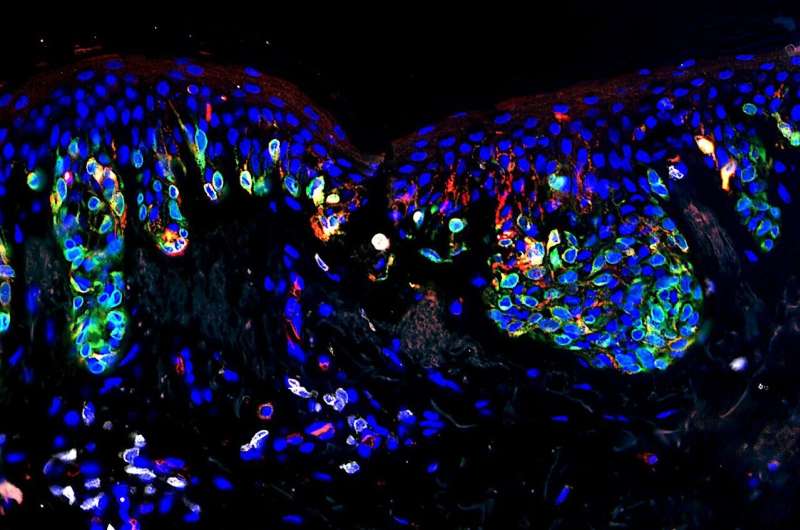
Researchers at Massachusetts General Hospital (MGH) have found that a subset of white blood cells known as CD4+ T cells reside naturally in moles on the body and could be activated as part of a novel strategy to treat melanoma and generate a potent immunity against its recurrence. The team learned that common moles are immunogenic targets for killer CD4+ T cells which, through their activation, could potentially broaden the body’s antitumor response and overcome the obstacles to current cancer immunotherapies, such as checkpoint inhibitors. The results of the study were published in Science Advances.
“Our research found that moles—those flat brown spots that all of us have—are infiltrated by T cells that are primed to destroy the mole,” says senior author Shadmehr (Shawn) Demehri, MD, Ph.D., an investigator in the Center for Cancer Immunology and the Cutaneous Biology Research Center at MGH. “These killer immune cells could be activated by immune-based therapeutics to not only eradicate the mole and the melanoma, but also generate a larger pool of immune cells that could help protect the individual against future development and progression of the cancer.” Activating resident CD4+ T cells, he adds, could be especially important for high-risk populations, including people with many atypical moles, or those with a family history or their own history of melanoma.
Melanoma, among the most serious forms of skin cancer, originates from melanocytes—cells that produce melanin, the pigment that gives skin its color. Approximately one-third of melanomas begin in moles, the rest from normal-looking skin. The MGH team sought to understand the relationship between melanocytic nevi—essentially, moles with few mutations—and melanoma. What they found was that once benign moles from humans were transplanted into immunodeficient mice in the lab, the moles were suddenly rejected or killed by the CD4+ T cells.
“In humans, the moles were not being rejected because they were held in check by other immune cells known as Tregs, or immunosuppressive regulatory T cells,” explains first author Erik Schiferle, an investigator in the Center for Cancer Immunology and the Cutaneous Biology Research Center. “Once in mice, however, the Tregs were inactive because they lacked the signaling present in humans. Without the suppressive effect of Tregs, the CD4+ T cells were free to become activated and eliminate the mole. This biological cause and effect suggested to us that if you could block the Tregs that already exist in human moles, you could reactivate the anti-melanocyte CD4+ T cells to eliminate the mole while cross-protecting the patient against the melanoma developing and/or reappearing.”
The study suggests that the next important step could be development of a treatment to suppress the Tregs at the site of the mole. Research is in fact under way in a number of labs on agents that could suppress Tregs to combat a variety of cancers. “One potential therapeutic approach is a localized or topical agent that could be applied on the skin to eradicate the mole,” says Schiferle. “Through our work, we’ve enlightened the field that Tregs are an appropriate target for immunosuppression of killer immune cells in the moles, and melanoma specifically.”
Source: Read Full Article
